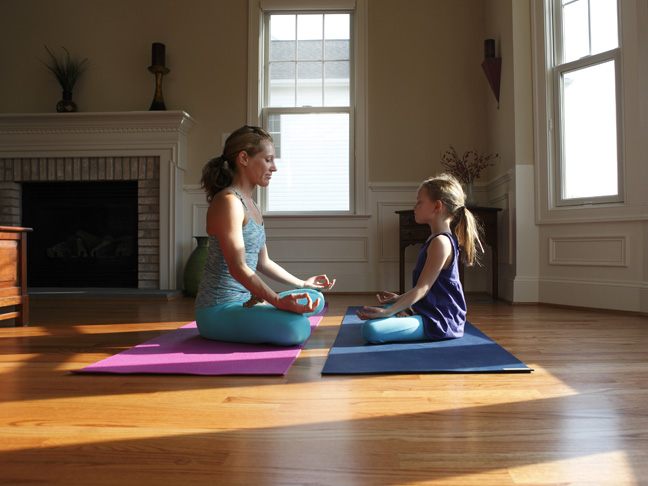When kids throw tantrums or meltdowns or whatever you call it in your house, it’s easy as a parent to react negatively. The yelling and crying might be so loud or so upsetting that you just want to make it stop. By focusing on stopping the behavior, however, you’re ignoring the fact that giant meltdowns are a cry for help. Yelling and stomping feel natural to a child overwhelmed by frustration; unless we teach kids how to apply adaptive coping skills, they will rely on those negative behaviors to get help when the going gets tough.
The good news is that there are a lot of ways to teach young children to understand and manage their emotions. Try a few of these strategies with your kid to help her learn to regulate her emotions both at home and when she’s out in the world. (Note: The best time to teach these strategies and practice them is when she’s calm, not in the middle of a meltdown.)
1. Use an anger thermometer. Many young children have a difficult time understanding when and why frustration builds up. It might seem like they flip a switch, but the truth is that emotions have likely been boiling beneath the surface for a while and finally become too much to stuff down any longer. The anger thermometer is a tool I use both in my house and with my psychotherapy clients. You can download a template for a blank thermometer and print several copies.
Explain to your child that a thermometer gauges your internal temperature. If you’re hot, the red line reaches to the top. If you’re cold, it stays down. Ask your child to describe how his body feels when he’s frustrated. Do his muscles get tight? Do his fists clench? Does he get hot and itchy? Add three lines to the thermometer. One for cool and calm, one for sort of upset and frustrated, and one for hot and angry. Have your child color in his emotional temperature throughout the day and ask him to describe why he feels that way and what has helped. For example, when my son colors cool, he usually tells me that coloring and puzzles make him feel happy and relaxed. When he colors hot, he tells me what’s making him feel upset.
This strategy helps build awareness of emotions.
2. Create a mad list. A few summers ago, I took my kids across the country for the whole summer instead of just a week or two. While most of the summer was amazing beyond words, we had a few moments when my son really missed his home, and that triggered some big meltdowns. We created the mad list to work through those moments.
We tell kids that it’s OK to be mad or sad, but when they have a tantrum we immediately shift into fix-it mode. That leaves little room for actually experiencing the emotions that triggered the tantrum in the first place. And it’s nearly impossible to work through emotions if you can’t express them. The mad list is a great way for little ones to express their feelings in a healthy way. Ask your child to draw or write everything that makes him mad — nothing should be off limits here. Empathize and share your own frustrations (maybe even make a list of your own), then have your child crumple up the list and throw it across the room.
3. Get physical to release emotions. Have you ever worried yourself into a neck ache? Or a cold? Believe it or not, kids do the same thing. When kids push down emotions, they experience physical complaints. They might complain of headaches, stomachaches, or sore muscles. Stress and frustration can do a number on the body. Getting physical helps. Try running around outdoors (to work stressed muscles and relieve pent up emotions), squeezing a stress ball, and tearing up paper and making creations with it. Another exercise that works: Trace your child’s body and ask him to color all the parts that feel upset red. Better yet, provide a blank piece of paper and say, “Color as much of this red as you feel mad right now. Show me how mad you are!”
4. Teach relaxation strategies. You can take a proactive approach to decreasing the stuffing of feelings by working relaxation strategies into your week. When kids have the time to reflect upon their emotions, talk, and work through those big feelings, they are more likely to stay calm when something frustrating does occur. Practice yoga. Teach your kid the art of relaxation breathing by asking him to inhale for a count of three, hold for three, and release for three. Repeat. While engaging in deep breathing, take him on an imaginary journey by telling a story in a low, even tone.
5. Show empathy and understanding. We all experience frustration at times. It happens. The best thing you can do to help your child learn to regulate her emotions is to listen without judgment. Too often we want to jump in and fix everything or give advice on how to fix things, but the truth is that everyone needs someone to just sit and listen sometimes.
Empathize with her. Share stories from your own childhood. Convey understanding. When we normalize and talk about emotions regularly, we teach kids that all feelings are OK and sometimes we just need a little help and unconditional love along the way.
Photo: Getty








